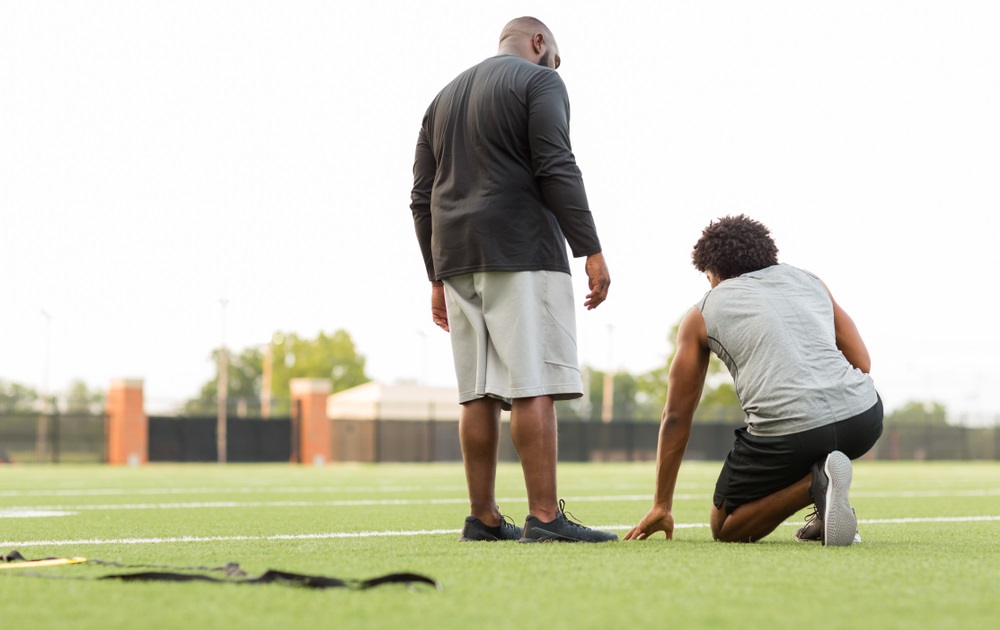Since the declaration from the American Academy of Pediatrics that our country is in a state of emergency in child and adolescent mental health, districts have ramped up their efforts to meet students’ whole needs. As we go into this school year, athletic trainers can and should be an essential part of any plan to improve students’ physical and mental health.
There’s a too-common perception that athletic trainers are a luxury item for school districts, that all they do is treat sprains and ice knees. However, athletic trainers really do much more.

Wayne R. Lamarre is a clinical professor and the director of the Master of Science in Athletic Training Program at the University of New England, Biddeford, Maine.
As integral members of the healthcare team, athletic trainers are uniquely qualified to provide front-line intervention that includes injury prevention, emergency medical treatment, injury rehabilitation and patient counseling in areas such as nutrition, mental health and substance use disorders. Indeed, in those school districts that are fortunate enough to have them on staff, athletic trainers have become crucial extensions of primary care physicians and school nurses, serving as their “eyes and ears” as they interact — often daily — with students.
Athletes at middle and high schools, or secondary schools, with proper medical teams that include an athletic trainer sustain a lower incidence of injuries (both acute and recurring) than athletes at schools without athletic trainers. Athletes at secondary schools with athletic trainers incur more diagnosed concussions, demonstrating better identification of these injuries.
Unfortunately, however, nearly 35% of secondary schools in the U.S. don’t have access to athletic trainers; and only 53% of schools that do enjoy the gold standard: full-time care.

John Ryan is the head athletic trainer at South Portland High School and the president of the Maine Athletic Trainers’ Association.
Only 47% of schools have an athletic trainer present during afternoon practices. Rural districts, in particular, suffer to hire and retain athletic trainers due to distance from major hospitals or sports medicine clinics. In Idaho, for example, which has a particularly high proportion of rural school districts, 62% of districts have no athletic trainers on staff at all.
And despite 470 students dying from youth-sports related deaths from 2008-2018, many districts simply are unaware of the specific role athletic trainers play in student health.
According to the National Athletic Trainers’ Association, athletic training “encompasses the prevention, examination, diagnosis, treatment and rehabilitation of emergent, acute or chronic injuries and medical conditions.” It’s recognized by the American Medical Association and the Department of Health and Human Services as an allied healthcare profession. Athletic trainers must graduate from an accredited baccalaureate or master’s program, and 70% of them have a master’s degree. Starting this fall, all students entering accredited athletic training education programs must earn a master’s degree before being allowed to practice. For districts without athletic trainers, coaches – who are only required to be trained in CPR, first aid and the use of automated external defibrillators – are in the inevitable position of trying to manage injuries without the proper education and training to do so.
On average, salaries for full-time athletic trainers cost schools from $58,028-$68,631, depending on the region.
But the benefits of secondary school athletic trainers are significant:
- They provide quality health and injury care for student athletes involved in both practices and contests;
- Athletic trainers providing immediate care to acute injuries may have a significant impact on the rate of re-injury;
- Athletes are less likely to aggravate an existing injury when the directions from an on-site athletic trainer are followed; and
- Athletic trainers can serve as students’ unbiased mental-health advocates.
Full-time secondary school athletic trainers offer the additional benefit of being available during the school day to assist injured athletes with recovery by implementing the instructions from their physicians. Providing these services at school can tremendously reduce lost instructional time for student athletes, decrease absenteeism and minimize lost work time by parents and guardians trying to get their child to physician and rehabilitation appointments.
For many students the athletic trainer is the healthcare provider that they see most often and in whom they place the most trust. At such a crucial stage in their physical and emotional development, the importance of this type of care for our students cannot be overstated. School districts need to advocate for the health of our adolescents. And they need to advocate for hiring full-time athletic trainers.
***
Wayne R. Lamarre is a clinical professor and the director of the Master of Science in Athletic Training Program at the University of New England, Biddeford, Maine.
John Ryan is the head athletic trainer at South Portland High School and the president of the Maine Athletic Trainers’ Association.
































